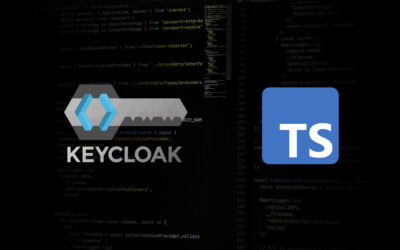Table of Content
- Building Apps with Robust Data Systems
- What are Data Systems?
- What is Data Model?
- Data Systems Architecture
- Storage Engines
- App Developers Plan Data Migration to a Data Warehouse
- Planning of Data Compatibility for App Development
- Cloud App Development and Distributed Databases
- Data Replication Systems—Replication Topology
- Designing Data Processing Systems
Building Apps with Robust Data Systems
Data challenges in app development stem from large volumes, frequent updates, and complex data structures.Understanding data storage and processing technologies is crucial for building successful applications. Developers must plan each app’s functionality, data workflows, and the right combination of tools to make informed architectural design decisions.Beyond functionality, nonfunctional requirements—such as scalability, reliability, performance, and maintenance—play a critical role in designing robust applications.
At Krasamo, an app development company, our engineers specialize in designing data systems and APIs to deliver consistent performance. By leveraging proven techniques and best practices, we create high-quality apps with accelerated time-to-market. This paper explores key concepts in data systems, focusing on storing and processing data to serve as a guide to discuss the right tools and architecture with our development teams.
What are Data Systems?
Data systems are software infrastructures designed to efficiently store, process, and manage data at scale. They combine storage engines, processing frameworks, and data transport mechanisms to handle large data volumes, ensure reliability, and support distributed operations. Key functions include data storage, transformation, synchronization, and analytics, with design choices driven by factors like scalability, latency, and access patterns.
What is Data Model?
A data model is a structured framework that defines how data is organized, stored, and related within a system. It specifies data structures, relationships, types, and constraints, serving as a blueprint for database design. Common types include relational (tables), document (JSON/XML), graph (nodes and edges), and key-value models. The choice of data model affects application performance, scalability, and query efficiency, ensuring data consistency and aligning with application requirements.
Data Systems Architecture
Choosing the right data model and understanding its implementation is a critical early decision in the development process, as it directly impacts the app’s functionality. The data model must align with the app’s requirements and assumptions to structure data effectively.
Data organization involves analyzing relationships between data items while balancing code complexity. The choice of a relational (SQL), non-relational (NoSQL), document-based, or graph-based model—or a combination—depends on the data’s use case and relationship types. Key questions include how data will be stored and accessed, ensuring the model supports both current and evolving needs.
Successful data-intensive apps requires careful planning of data relationships, code access paths, and structural details. This involves implementing data models that synchronize interactions with formats like JSON and XML, support search indexing, caching, and maintain schemas for consistency (encoding data). App development work ensures that the app meets user experience expectations.
At Krasamo, we partner with clients to design scalable, maintainable systems tailored to their unique requirements. Our engineers work in sandbox environments, conduct rigorous manual and automated testing, and design architectures capable of handling high data volumes, loading parameters, and latency requirements. We employ fault-tolerant strategies, with DevOps teams monitoring and resolving failures through continuous testing and rapid recovery processes.
Scalability is central to our approach. We design data systems to handle specific data loads, with flexibility for scaling as new requirements emerge. Simplifying systems by abstracting components improves their reusability, adaptability, and long-term maintainability.
Integrating apps with robust data architectures ensures seamless synchronization across sources, delivering a smooth user experience. Clean data models and efficient code simplify query development and data retrieval, using frameworks like SQL to optimize performance.
Storage Engines
Choosing the right storage engine for your app’s workload is a strategic decision in the development process. Databases store and retrieve data to support transactions, while data analytics often require well-designed indexes to optimize data retrieval.
A good indexing strategy improves query performance by balancing query speed with read and write patterns. At Krasamo, our developers carefully monitor indexing approaches and design query interfaces (e.g., SQL) that account for your system’s limitations, ensuring efficient and reliable data operations.
App Developers Plan Data Migration to a Data Warehouse
A key aspect of app development involves managing the extraction, transformation, and loading (ETL) of data into a data warehouse. This process enables efficient querying of both operational and analytical data. Data warehouses offer sufficient bandwidth and optimize data retrieval patterns, making them essential for handling large-scale analytics.
App development teams must consider various factors, including the app’s data needs, data models, encoding methods, and schema design (e.g., cluster architecture) or schema migrations. At Krasamo, we collaborate with clients to choose the right storage engines and tools based on workload types, access patterns, and application requirements.
Planning of Data Compatibility for App Development
Data applications evolve frequently, requiring upgrades and seamless integration with other systems (data flow). Often, new application versions must interact with databases using older schema versions, necessitating specific encoding formats or byte sequences (e.g., binary encoding or serialization) to ensure forward and backward compatibility.
Several methods are available for handling encoded data flows, including REST APIs, RPCs, and asynchronous systems (e.g., message brokers). Each approach varies in configuration and implementation, influencing how the application evolves within the data ecosystem. Additionally, programming languages and data formats (e.g., JSON, XML, CSV) play a critical role in encoding and compatibility.
Collaborate with your app development team to understand data flow, API versioning, schema compatibility, and decoding (parsing). Developing data-driven applications requires specialized skills in data structuring, integration planning, and selecting the right partners and technologies.
Cloud App Development and Distributed Databases
For medium to large operations, databases must run across multiple machines and distribute data across various locations (datastores) to reduce failure risks, lower latency, and increase query capacity. However, distributing data introduces complexities, particularly when managing changes. Data updates must be replicated across networks to ensure consistency across all connected machines or nodes.
Data Replication Systems—Replication Topology
Databases can be configured to replicate data using asynchronous or synchronous communication, ensuring data copies (replicas) are maintained across networked machines or nodes. This allows continuous data updates and enhances fault tolerance. At Krasamo, we help clients choose the best replication strategy during the app development planning phase.
Using custom or built-in replication modes, we establish consistent data streams across nodes. A common method is leader-based replication, where data is written to a leader database and replicated to follower databases.
Replication streams use log systems to track changes, log write requests, and restore from the last transaction in case of node failures. Logs help rebuild data structures from the storage engine, ensuring data consistency.
For more complex systems, such as those involving multiple data centers or offline operations, multi-leader or leaderless replication may be appropriate. Our app developers assess use cases to optimize consistency, conflict resolution, and technical design.
Krasamo’s developers tailor replication strategies to your app’s specific requirements, creating custom code to handle database transactions and data distribution. Partitioning can be combined with replication to distribute loads and improve query performance, with additional operations like rebalancing partitions and routing queries.
System administrators manage leader-follower configurations, handle failovers, reassign leaders, and address network or concurrency issues. In more complex apps, developers may need to code abstraction layers for database transactions to optimize reads and writes.
Building fault-tolerant systems requires handling partial failures, expected behaviors, and recovery strategies. Developers configure network topologies and handle system reactions to failures, such as crashes or faults, balancing trade-offs to ensure robust performance.
App development efforts focus on defining system models with clear assumptions about node failures, timing, and resource optimization. These models guide logical problem-solving, enabling effective management of app implementations and resilience in handling failures.
Designing Data Processing Systems
Designing data systems requires careful consideration of the processing system’s performance. Key approaches include:
- Online Interactive Processing Systems: Online systems follow a request/response model, where a request triggers a response in real time. Performance is measured by service response time.
- Offline/Batch Processing Systems: Batch systems process large, fixed datasets periodically. Performance is evaluated based on job completion time (batch runtime) and dataset size (throughput).
- Stream Processing Systems (Near Real-Time): Stream systems process data streams continuously, producing outputs in response to events. They are ideal for scenarios requiring low-latency event handling.
Choosing the right computation approach is critical for integrating data and algorithms, optimizing operations, and ensuring system reliability. Understanding the tools and trade-offs helps in designing a solution that aligns with your app’s data architecture.












I’ve reviewed the article on Fundamentals of Data Systems for App Development and agree that understanding data storage and processing technologies is vital in building successful applications. The author’s emphasis on scalability, reliability, and performance aligns with industry best practices. For app development companies like Krasamo, it’s essential to leverage proven techniques and design data systems that can handle large volumes of data, ensuring robustness in data systems. This approach will undoubtedly enhance app development processes.
I strongly disagree that the blog post oversimplifies the complexities of data modeling. In reality, selecting the right data model is a crucial aspect of mobile app development, especially when it comes to scalability and performance. A well-designed data model can make or break an application’s functionality, and I appreciate this post for highlighting its importance.
I appreciate how you’ve outlined the fundamental principles of designing data systems for app development. While I agree that each approach has its merits, I’m curious to know more about the scalability implications of choosing online interactive processing systems for large-scale datasets, particularly in the context of app development and data systems where latency can be critical.
I’m surprised that someone would suggest online interactive processing systems for large-scale datasets without considering the scalability implications. Don’t you think it’s a recipe for disaster? Have you consulted cloud advisory services to ensure your architecture can handle high traffic and latency-sensitive applications?
I’m really impressed with this article! As a computer engineer, I can attest to the importance of robust data systems in app development. It’s essential for devs to consider scalability, reliability, and performance when designing their apps. The author does an excellent job explaining complex concepts like data storage and processing technologies. Great resource for anyone looking for AWS consultancy services or just wanting to upskill on data systems! 🤖💻
I concur that understanding the intricacies of data systems is indispensable for app development and data systems. However, I would appreciate further clarification on how Krasamo’s engineers specialize in designing data systems and APIs to deliver consistent performance. Could you provide more specifics regarding your approach to leveraging proven techniques and best practices for designing robust applications?
I’d love to hear more about implementing optimal indexing strategies, especially in relation to AWS consultancy best practices.
I’d love to see an example of this in practice via AWS consultancy!
Hey blog author,
glad u touched on relational vs no-relational db models. i got some exp in cloud advisory services where we help clients migrate to AWS or Azure. its a lot of work, but if done right, can be super scalable.
btw, have u considered graph databases? they’re awesome for handling complex relationships btw data items. at least that’s what i’ve seen in my limited experience with neo4j.
anywayz, nice post!